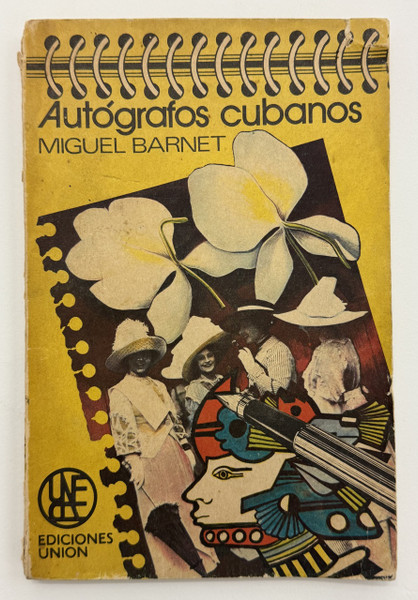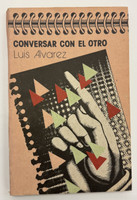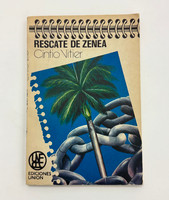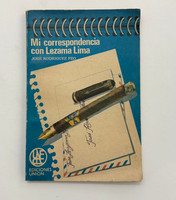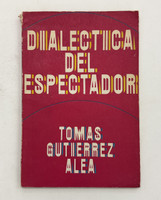- Travel
-
Exhibits
- La Portada Cubana
- Immortal Cuba: Artists Take on Their Heroes
- Seattle Poster Exhibit
- Sandra Dooley & Alejandrina Cué
- The Art of Wayacón
- Cuban Folk Art
- Cuba In Black And White
- 25 Years of Cuban Art Space
- Summer Folk Art Expo
- ¡SPRING AWAKENING FROM CUBA!
- Celebrating The Art Of Cuban Women
- Celebrating Paper, Affordable Art from Cuba
- Art of the Revolution
- Outsider Art
- Lost and Found
- En la lucha: Celebrating Cuban Women and Their Art
- Cuban Art Stash
- 100 Fires: 5 Cienfuegos Artists' Work on Paper
- Waya + Monte! Magic Realism in Cienfuegos
- Viva Cuba Viva! Poster Show
- Cultivando Sueños
- Black Lives Matter in Cuba Jan 9-March 27
- Leandro Soto: Crónicas visuales
- Cuban Canvas
-
Archive
- Global Reflection 2018: Spirit and Community
- Exhibit in the cloud: Contemporary Works on Paper
- MADE IN CUBA! MINNEAPOLIS EXHIBIT
- Cuban Posters and Photography from CCS collection
- AUTUMN SALE! Sept/Oct 2017
- SPRING ARTS AND CRAFT SALE
- Vuelo Directo/Non Stop: Alberto & Alejandro Lescay
- The Many Faces of Fidel
- Somos
- Made in Cuba!
- The US empire in Cuban graphics
- Made in Cuba/Seattle exhibit
- Entre Nos
- Looking Back
- Cuban Art Space
- Membership/Donate
- About Us
- Cuba News
-
Autógrafos cubanos (Cuban Autographs) is a collection of literary profiles and cultural sketches by Miguel Barnet, one of Cuba's most distinguished writers and ethnographers, published by Ediciones Unión in 1990. The book presents intimate portraits of major Cuban cultural figures including poets José María Heredia and Nicolás Guillén, performers Bola de Nieve and Rita Montaner, anthropologist Fernando Ortiz, painter René Portocarrero, novelist Alejo Carpentier, nueva trova singer Pablo Milanés, and painter Ever Fonseca, among others.
Cover designer Francisco Masvidal creates an exuberant collage composition on a vibrant golden-yellow background. Large cream-colored flowers dominate the upper portion, suggesting both Cuban tropical flora and the cultural flowering being documented. Below, a vintage sepia-toned photograph shows elegantly dressed figures from early 20th-century Cuba, connecting the present to historical continuity. At the bottom, a bold geometric abstract design in turquoise, orange, yellow, black, and white stripes creates a modernist contrast, perhaps representing contemporary Cuban visual arts. The spiral binding at the top suggests an informal notebook or journal format, appropriate for the personal, intimate nature of Barnet's literary sketches.
The title "Autógrafos cubanos" plays on multiple meanings—literally "autographs" but figuratively representing both signatures (distinctive marks of personality) and self-portraits of Cuban culture. The back cover explains: "If a writer holds in the palm of his hand the cultural coordinates of Cuba, it is Miguel Barnet, author of Biografía de un cimarrónand other testimonial novels. In Autógrafos cubanos he explores parcels of our culture little addressed by other authors."
Miguel Barnet (born Havana, 1940) is a poet, narrator, and researcher who revolutionized Latin American literature with his "testimonial novel" form, beginning with Biografía de un cimarrón (Biography of a Runaway Slave, 1966), which preserved the oral history of former slave Esteban Montejo. His other major works include the poetry collections La piedrafina y el pavorreal (1963), La sagrada familia (1967), and Carta de noche (1976); the fable collection Akekè y la jutía (1978); the testimonial novels Canción de Rachel (1969), Gallego (1983), and La vida real (1987); and the essay collection La fuente viva (1984).
The introduction "¿Por qué?" (Why?) explains how from infancy Cubans construct their myths—invisible substances that imprint themselves on our skin, serving as compass and stimulus throughout life's journey, contributing to that cultural scaffolding connected to taste and a particular worldview. Barnet writes about figures who have left important contributions to Cuban culture, transformed into a signal and challenge for future creators. The contagious passion emanating from them must not be extinguished.
Published by UNEAC (Unión de Escritores y Artistas de Cuba) through Ediciones Unión, the book was printed at Combinado Poligráfico "Eveho Rodríguez Curbelo" and finished in September 1989, "Year 31 of the Revolution." This spiral-bound format represents an accessible, intimate approach to cultural history, positioning Barnet as both witness and interpreter of Cuba's rich artistic legacy.
-
-
Discover More at the Center for Cuban Studies

